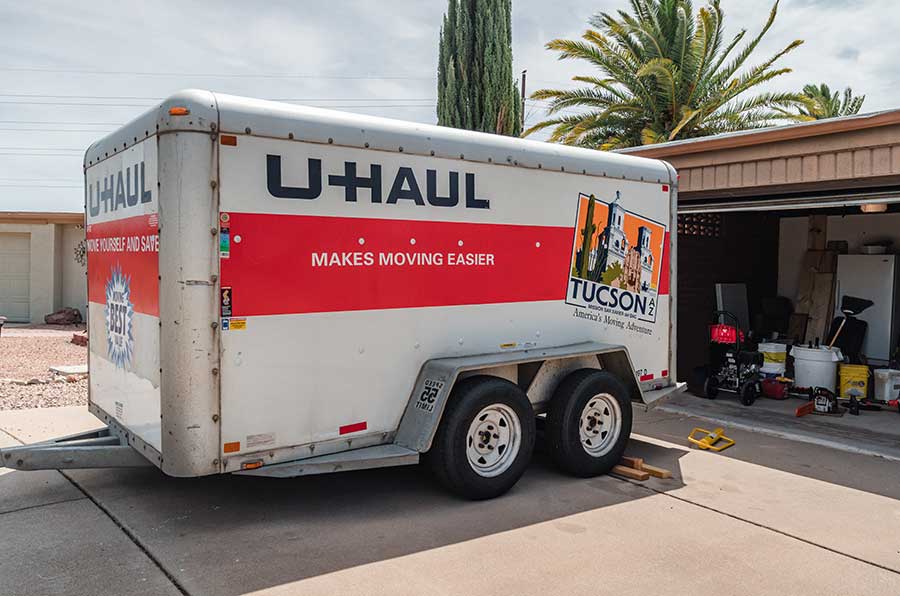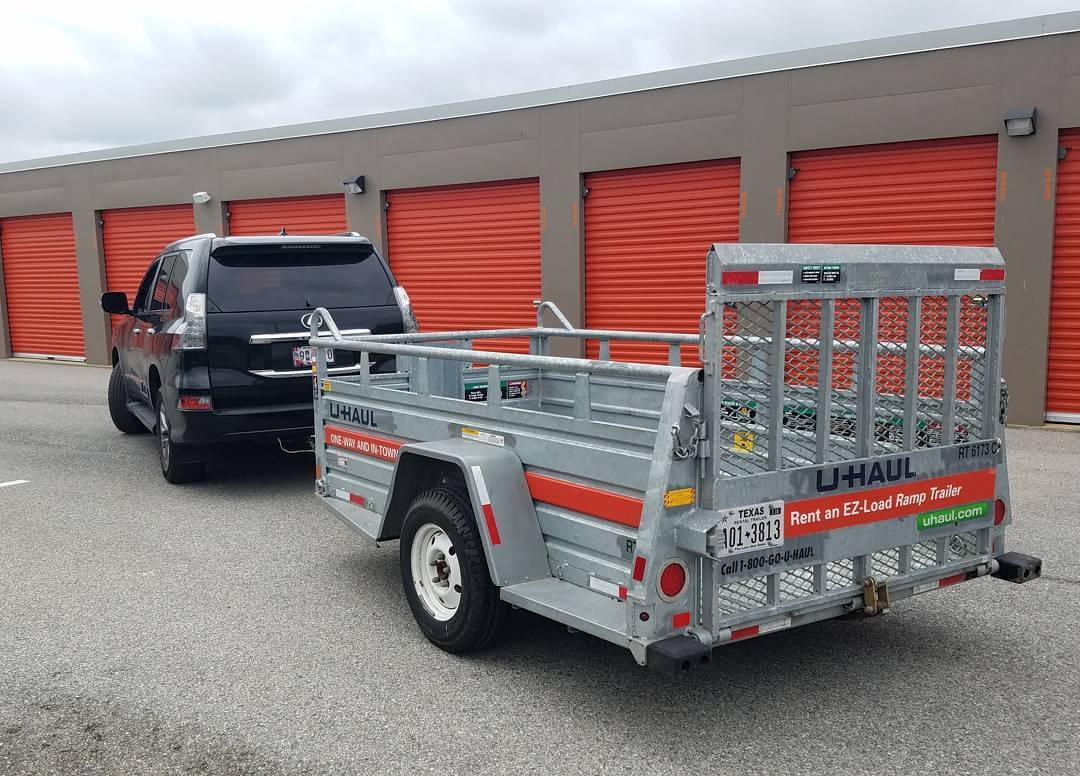U-Haul Trailer: Your Comprehensive Guide to Moving and Hauling Solutions
Moving can be a daunting task, whether it’s across town or across the country. For decades, U-Haul trailers have stood as a cornerstone of DIY moving, offering a flexible, affordable, and accessible solution for individuals and businesses alike. More than just a simple box on wheels, a U-Haul trailer represents independence, cost-effectiveness, and the power to control your own moving or hauling project. From transporting cherished household items to moving vehicles or even clearing out yard waste, U-Haul’s diverse fleet of trailers empowers millions to tackle their tasks efficiently. This comprehensive guide will delve into everything you need to know about U-Haul trailers, from understanding the different types and the rental process to ensuring safety and maximizing efficiency for your next haul.
Why Choose a U-Haul Trailer? The Benefits of DIY Hauling
Opting for a U-Haul trailer over full-service movers or alternative transportation methods comes with a host of advantages that make it a popular choice:
- Cost-Effectiveness: Perhaps the most significant benefit, U-Haul trailers are considerably cheaper than hiring professional movers, especially for local moves. You save on labor costs and only pay for the equipment you use.
- Flexibility and Control: You dictate the schedule, the packing, and the loading. This level of control is invaluable, allowing you to move at your own pace and with your own methods.
- Variety of Sizes and Types: U-Haul offers an extensive range of trailers, ensuring there’s a perfect fit for almost any hauling need, from a few boxes to an entire car.
- Widespread Availability: With thousands of locations across North America, U-Haul trailers are readily available for pick-up and drop-off, making one-way moves particularly convenient.
- Reliability: U-Haul maintains a vast and regularly serviced fleet, providing dependable equipment for your journey.
- Environmental Responsibility: By opting for a trailer rather than a separate moving truck if your vehicle can tow, you can potentially reduce fuel consumption and your carbon footprint for smaller moves.
Understanding U-Haul Trailer Types and Sizes
U-Haul categorizes its trailers into three primary groups, each designed for specific purposes. Knowing the differences is crucial for selecting the right equipment for your job.
1. Cargo Trailers (Enclosed)
These are the most common trailers for household moves, offering protection from weather and enhanced security.
- Description: Fully enclosed, box-like trailers with a ramp or swing-out door for easy loading. They protect contents from rain, dust, and theft.
- Best For: Furniture, appliances, boxes, electronics, long-distance moves, items requiring protection from the elements.
- Sizes Available:
- 4×8: Ideal for small apartments, dorm rooms, or extra storage. Can hold a few pieces of furniture and boxes.
- 5×8: Suitable for a studio apartment or a couple of rooms. A popular choice for general hauling.
- 5×10: Good for one-bedroom apartments or a small amount of furniture from a larger home.
- 6×12: The largest enclosed trailer, perfect for two-bedroom apartments or larger household moves. Often used in conjunction with a U-Haul truck for extra capacity.
2. Utility Trailers (Open)
Utility trailers are open-top and versatile, perfect for items that don’t fit in enclosed trailers or don’t require weather protection.
- Description: Flatbed trailers with low sides and an open top, often featuring a loading ramp. They are excellent for oddly shaped items, landscaping materials, or equipment.
- Best For: Landscaping supplies, construction materials, motorcycles, ATVs, yard waste, large appliances, furniture that won’t fit enclosed.
- Sizes Available:
- 4×7: Smallest utility trailer, good for light hauling.
- 5×8: A popular, versatile option for general utility needs.
- 6×12: The largest utility trailer, often with a heavy-duty ramp, capable of handling significant loads.
3. Car Trailers (Auto Transport & Tow Dolly)
Designed specifically for moving vehicles, these trailers come in two main types.
- Auto Transport:
- Description: A full-platform trailer where all four wheels of the towed vehicle are off the ground. Equipped with ramps and tie-down straps.
- Best For: Long-distance car moves, classic cars, luxury vehicles, all-wheel-drive (AWD) or four-wheel-drive (4WD) vehicles, or vehicles that cannot be towed with two wheels on the ground.
- Tow Dolly:
- Description: Lifts only the front two wheels of the towed vehicle off the ground, leaving the rear wheels on the road.
- Best For: Front-wheel-drive (FWD) vehicles, shorter distances, or when a full auto transport isn’t necessary or feasible. Requires proper securing and steering wheel locking of the towed vehicle.
The U-Haul Trailer Rental Process: A Step-by-Step Guide
Renting a U-Haul trailer is a straightforward process, but proper planning and preparation are key to a successful experience.
-
Determine Your Needs:
- What are you moving? List all items to estimate volume and weight.
- How much do you have? This dictates the trailer size.
- What’s your towing vehicle? Crucial for ensuring it meets towing capacity requirements. You’ll need to know your vehicle’s make, model, year, and whether it has a proper hitch and wiring.
-
Reserve Your Trailer:
- You can reserve online at UHaul.com, over the phone, or in person at a U-Haul location.
- Specify your desired trailer type and size, pick-up and drop-off locations, and rental dates. For one-way moves, be precise about your destination.
-
Prepare Your Tow Vehicle:
- Hitch: Your vehicle needs a properly installed hitch receiver (Class I, II, or III, depending on the trailer).
- Hitch Ball: Ensure you have the correct size hitch ball (typically 1 7/8" or 2") and it’s securely attached to your ball mount.
- Wiring Harness: A functional 4-flat wiring harness is essential for trailer lights (turn signals, brake lights, running lights). U-Haul can install hitches and wiring if needed.
- Towing Capacity: Crucially, confirm your vehicle’s towing capacity (found in your owner’s manual) can handle the gross weight of the loaded trailer. Never exceed this limit.
-
Pick Up Your Trailer:
- At the U-Haul center, staff will verify your reservation and vehicle.
- They will assist in hitching the trailer to your vehicle, ensuring the coupler is secure, safety chains are crossed and attached, and the electrical connection for lights is working.
- You’ll perform a visual inspection of the trailer and sign the rental agreement. Consider optional coverage like Safetow for peace of mind.
-
Loading Your Trailer:
- Weight Distribution: Load heavier items first, placing them low and forward, over or slightly ahead of the trailer’s axle. Distribute weight evenly side-to-side to prevent sway.
- Secure Everything: Use tie-down straps, ropes, and moving blankets to prevent items from shifting during transit. Loose items can cause damage or destabilize the trailer.
-
Driving with a Trailer:
- Slower Speeds: Reduce your speed, especially on turns, downhills, and in adverse weather.
- Increased Braking Distance: Allow significantly more room for stopping.
- Wider Turns: Account for the trailer’s length when turning.
- Lane Changes: Use your mirrors frequently and signal well in advance.
- Fuel Economy: Expect reduced fuel efficiency.
-
Returning Your Trailer:
- Return the trailer on time to avoid late fees.
- Ensure it’s reasonably clean.
- U-Haul staff will inspect the trailer upon return.
Important Considerations and Safety Tips
Safety is paramount when towing. Adhering to these guidelines will help ensure a smooth and secure journey.
- Never Exceed Towing Capacity: This is the most critical rule. Overloading can lead to loss of control, damage to your vehicle, and serious accidents.
- Proper Hitch and Wiring: Ensure all connections are secure and lights are fully functional before every trip.
- Balanced Load: An improperly loaded trailer (too much weight in the back, for example) can cause dangerous "trailer sway."
- Tire Pressure: Check the tire pressure on both your tow vehicle and the trailer before departure. Refer to the recommended pressures.
- Pre-Trip Inspection: Before you drive, do a quick walk-around: check lights, tires, coupler, safety chains, and cargo security.
- Adjust Mirrors: Extend or adjust your side mirrors to provide a clear view along both sides of the trailer.
- Insurance Coverage: Check your personal auto insurance policy for trailer coverage. U-Haul offers optional protection plans (Safetow) that cover damage to the trailer and often provide supplemental liability.
- Braking Systems: Larger U-Haul trailers (like auto transports) are equipped with surge brakes, which automatically apply when your tow vehicle brakes. Understand how these work.
Practical Advice for a Smooth Haul
- Pack Smart, Not Just Tight: Use moving blankets to protect furniture, and fill empty spaces to prevent items from shifting.
- Practice Makes Perfect: If you’re new to towing, practice driving, turning, and backing up in an empty parking lot before hitting the open road.
- Plan Your Route: Avoid routes with sharp turns, steep grades, low clearances, or heavy traffic if possible. Use GPS systems that allow for trailer input if available.
- Factor in Fuel Stops: With decreased fuel efficiency, plan for more frequent stops.
- Tools and Essentials: Carry basic tools like a wrench (for the hitch ball), work gloves, and jumper cables.
- Stay Hydrated and Rested: Driving with a trailer can be more fatiguing. Take breaks and stay alert.
U-Haul Trailer Estimated Pricing Table
Please note that U-Haul prices are highly variable based on location, availability, duration, and whether it’s an in-town or one-way rental. The rates below are estimates and should be used as a general guide. Always check U-Haul.com or call a local center for exact pricing.
| Trailer Type | Size | Estimated Daily In-Town Rate | Estimated One-Way Base Rate (Range)* | Capacity (Approx.) | Hitch Ball Size Required |
|---|---|---|---|---|---|
| Cargo Trailers | |||||
| 4×8 | $14.95 – $19.95 | $60 – $150 | 1,600 lbs / 160 cu ft | 1 7/8" or 2" | |
| 5×8 | $18.95 – $24.95 | $70 – $180 | 1,800 lbs / 200 cu ft | 1 7/8" or 2" | |
| 5×10 | $24.95 – $29.95 | $80 – $220 | 1,900 lbs / 250 cu ft | 1 7/8" or 2" | |
| 6×12 | $29.95 – $34.95 | $90 – $280 | 2,500 lbs / 390 cu ft | 2" | |
| Utility Trailers | |||||
| 4×7 | $14.95 – $19.95 | Not typically for one-way | 1,700 lbs / Open | 1 7/8" or 2" | |
| 5×8 | $18.95 – $24.95 | Not typically for one-way | 1,800 lbs / Open | 1 7/8" or 2" | |
| 6×12 | $29.95 – $34.95 | Not typically for one-way | 2,500 lbs / Open | 2" | |
| Car Trailers | |||||
| Tow Dolly | N/A | $44.95 – $54.95 | $70 – $200 | 3,450 lbs | 2" |
| Auto Transport | N/A | $54.95 – $64.95 | $90 – $300 | 5,290 lbs | 2" |
*One-Way Base Rates are highly variable, often include a set number of days/miles, and do not include additional charges like environmental fees, taxes, or optional Safetow coverage.
Frequently Asked Questions (FAQ) About U-Haul Trailers
Q: Do I need a special driver’s license to tow a U-Haul trailer?
A: In most states and provinces in the U.S. and Canada, a standard driver’s license is sufficient for towing a U-Haul trailer, as long as your combined vehicle and trailer weight does not exceed certain limits (which U-Haul trailers typically fall under). Always check local regulations.
Q: What kind of hitch do I need for a U-Haul trailer?
A: You’ll need a properly installed hitch receiver on your vehicle, a ball mount, and a hitch ball of the correct size (either 1 7/8" or 2", depending on the trailer). U-Haul locations can install these if you don’t have them.
Q: Can I tow a U-Haul trailer with any car?
A: No. Your vehicle must meet the specific towing requirements, including having a sufficient towing capacity, a proper hitch, and functional lighting connections. U-Haul’s website has a tool to help you determine if your vehicle is compatible.
Q: What happens if I return the trailer late?
A: U-Haul typically charges late fees for equipment returned past the agreed-upon time. It’s best to communicate with your pick-up or drop-off location if you anticipate delays.
Q: Do U-Haul trailers have brakes?
A: Larger trailers, particularly the auto transports, are equipped with surge brakes that activate automatically when your tow vehicle slows down. Most smaller cargo and utility trailers do not have independent braking systems.
Q: What is Safetow? Do I need it?
A: Safetow is U-Haul’s optional protection plan for trailers. It covers damage to the U-Haul trailer and often provides supplemental liability coverage. Your personal auto insurance may not cover towing, so it’s wise to check your policy or consider Safetow for peace of mind.
Q: Can I drop off a one-way trailer at a different U-Haul location than planned?
A: It is possible, but you must arrange this with U-Haul directly. Do not simply drop it off at an unauthorized location, as this can result in additional fees.
Q: How fast can I drive with a U-Haul trailer?
A: While specific speed limits for towing vary by state/province, it’s generally recommended to drive at least 10-15 mph below the posted speed limit, especially on highways, and to avoid exceeding 55-65 mph. Always prioritize safety over speed.
Conclusion
U-Haul trailers offer an unparalleled solution for individuals and businesses seeking control, flexibility, and affordability in their moving and hauling endeavors. By understanding the different types of trailers available, familiarizing yourself with the rental process, and prioritizing safety, you can transform a potentially stressful task into a manageable and empowering experience. From the smallest cargo trailer to the largest auto transport, U-Haul provides the tools to move your life forward. With proper planning, preparation, and adherence to safety guidelines, your next U-Haul trailer rental will be a smooth, efficient, and successful journey.
 Trucks for Sale Find the best deals on used trucks for sale across the USA. Browse pickups, semi trucks, dump trucks and more – updated daily
Trucks for Sale Find the best deals on used trucks for sale across the USA. Browse pickups, semi trucks, dump trucks and more – updated daily


